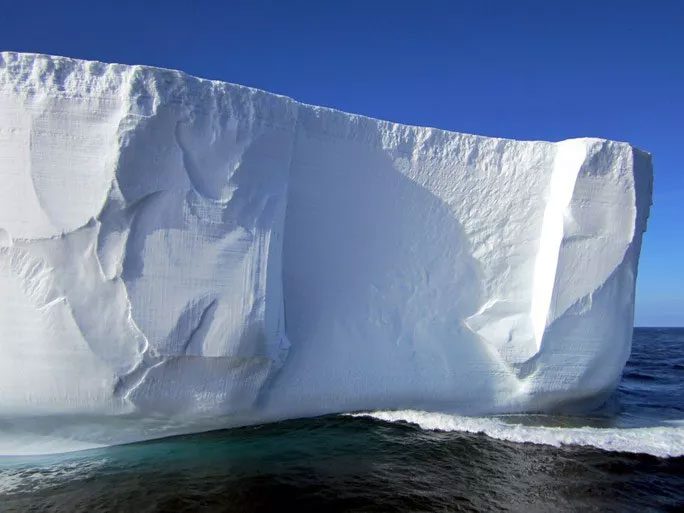In a place where nothing seems to survive – the depths of the Scotia Sea, largely covered by the icy Southern Ocean – fragments of mysterious Antarctic DNA have emerged.
This shocking revelation comes from a study recently published in the scientific journal Nature Communications, conducted by Dr. Linda Armberecht and her colleagues from the Institute for Marine and Antarctic Studies (IMAS), the Ecology and Biodiversity Center at the University of Tasmania, the Australian Centre for Ancient DNA, and the School of Engineering and Technology at the University of Adelaide, Australia.

A massive iceberg drifting in the Scotia Sea.
In their quest for sedimentary DNA, a type of DNA found in ancient sediments, scientists uncovered record-breaking fragments – 1 million years old, buried beneath the Scotia Sea.
The Scotia Sea is one of the harshest marine environments in the world, located adjacent to the Antarctic continent, with most of its area belonging to the Southern Ocean, and a small portion lying within the Atlantic Ocean.
According to Science Alert, sedimentary DNA has previously been found in more hospitable environments, such as caves on land and beneath the Arctic’s permafrost, with earlier records dating back to 400,000 and 650,000 years.
Cold temperatures, low oxygen levels, and a lack of ultraviolet radiation make the Scotia Sea’s polar marine environments incredibly peculiar for life to exist, but they also create excellent conditions for preserving remnants of ancient life, should it have ever existed.
The research team stated that the 1-million-year-old DNA recently reported was extracted from sediment samples collected from the seabed during an expedition in 2019, undergoing a comprehensive contamination control process to ensure that it truly belonged to an ancient organism, rather than biological traces that were “contaminated” during excavation and transport.
This expedition also brought back remnants of diatoms, a type of single-celled organism that is 540,000 years old.
Extracting ancient DNA is merely the preliminary step of the research, despite the years spent achieving it. It is still unclear what the “ghost organism” – the source of these DNA fragments – is and how it existed in ancient Antarctica. However, that will be the answer they pursue.
The discovery of ancient DNA not only provides insights into the past, shedding light on how ocean ecosystems existed and responded to climate patterns, but it also helps us predict what may happen in the future.
Antarctica is one of the most vulnerable regions on Earth to climate change, and conversely, its changes significantly impact the planet’s future.


















































